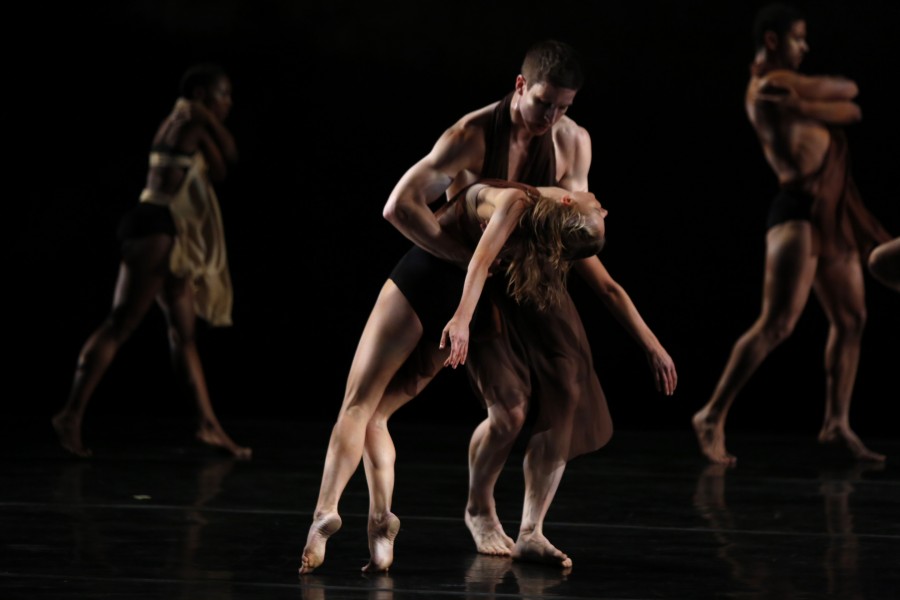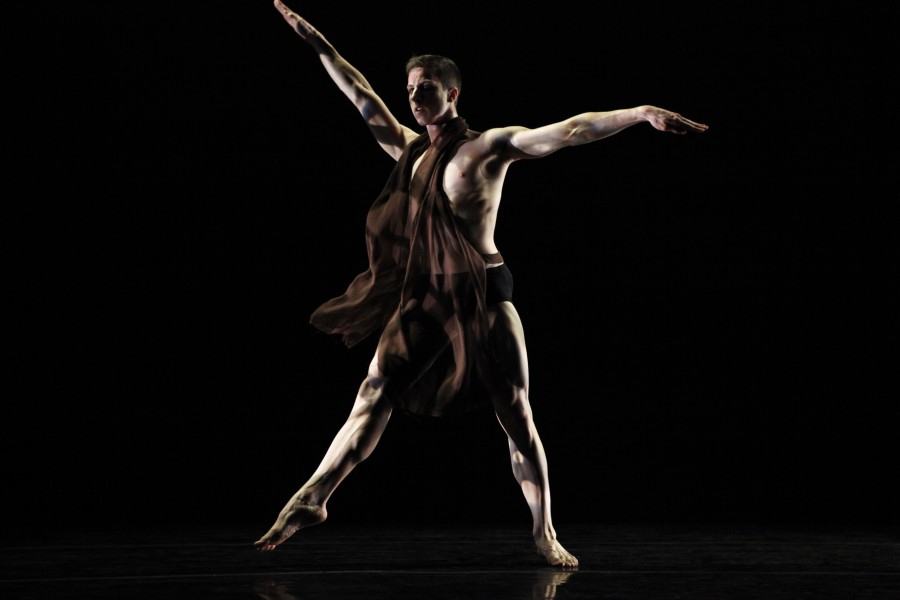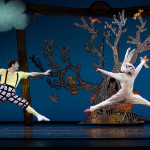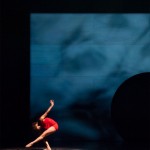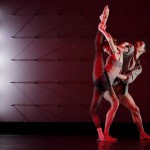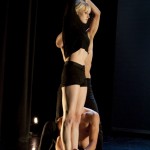Leigh Donlan reports from the Yerba Buena Center for the Arts, San Francisco:
Stephen Petronio’s Like Lazarus Did made its West Coast première at the Yerba Buena Center for the Arts on Friday night, easily charming the audience with the local San Francisco Girls Chorus angelically singing, “I want to die like Lazarus did.” Their rendition of this and other American slave spirituals, composed by Son Lux, was an endearing touch that thankfully continued throughout the evening’s hourlong performance, providing a reprieve from the heaviness that unfolded onstage.
Janine Antoni, the creator of the performance’s ‘living set,’ was suspended above center stage in a helicopter rescue gurney, with a collage of plastic bones hanging above her body as she lay perfectly still, apparently meditating throughout the entire performance. Petronio himself lay at the lip of the stage, in the same meditative position, but departed as the curtain rose.
The dance began with three trios clothed in Lazarian burial garments of gauzy white. Their constant blur of movement was graceful, with long sweeping limbs, yet substantial in contrast to the weightlessness of Son Lux’s recorded musical score, a highly textured blend of his own voice singing old American slave songs from the 1800’s, and electro-acoustic sounds.
The performance was inspired by the mythology of resurrection, like the tale of Lazarus, who rose from the dead after Jesus let him die, proving that Jesus was indeed the son of God, and encouraging his followers to have faith.
In a gorgeous pas de quatre, Davalois Fearon displayed Olympian strength as she attempts to flee captivity by three males, who move like a chain gang while they toss her about with impressive lifts and throws. At points, she scrambles up the legs of their human pyramid, almost reaching the top, but is dragged back in to the struggle. This powerful scene was followed by two females dancing sorrowfully as Lux’s voice moaned, “Ain’t I a woman… Where did your Christ come from? From God and a woman.”
Petronio’s unique body language is hyper-technical but not unnerving. It remains smooth, as his dancers masterfully paint a lush terrain of trials and tribulations. Two silver ropes descended out of nowhere to a soloist, Joshua Tuason, who is drawn to them but ultimately forgoes the opportunity to ascend by sinking more deeply into his physical body, rippling his back muscles and gyrating his hips. The piece closes with a powerful solo by Nicholas Sciscione, who looked naked in flesh-colored trunks, engulfed in the warmth of a spotlight. He alternates between boxing an invisible force, and rolling about the floor like a helpless foetus.
It was a thought provoking performance. And I appreciated that Petronio didn’t overtly force perspective. He offered a large visual platter for the audience to choose from, that always provided a calm alternative to the struggle, mainly Antoni floating above in meditation. Perhaps this was a transcendental vision for Petronio. One hopes he will continue to have such visions, eventually ones that are free of man-made suffering, both onstage and off.

